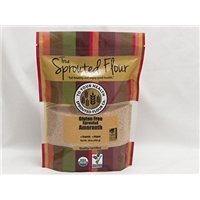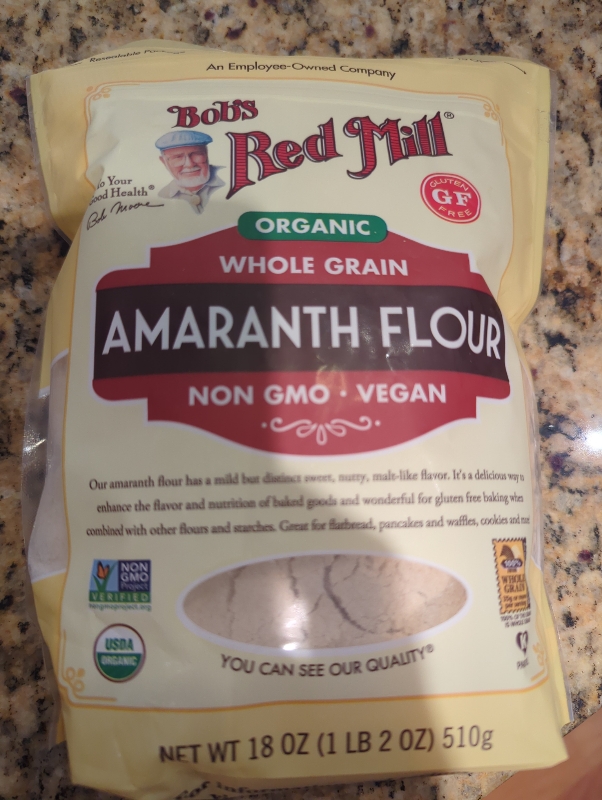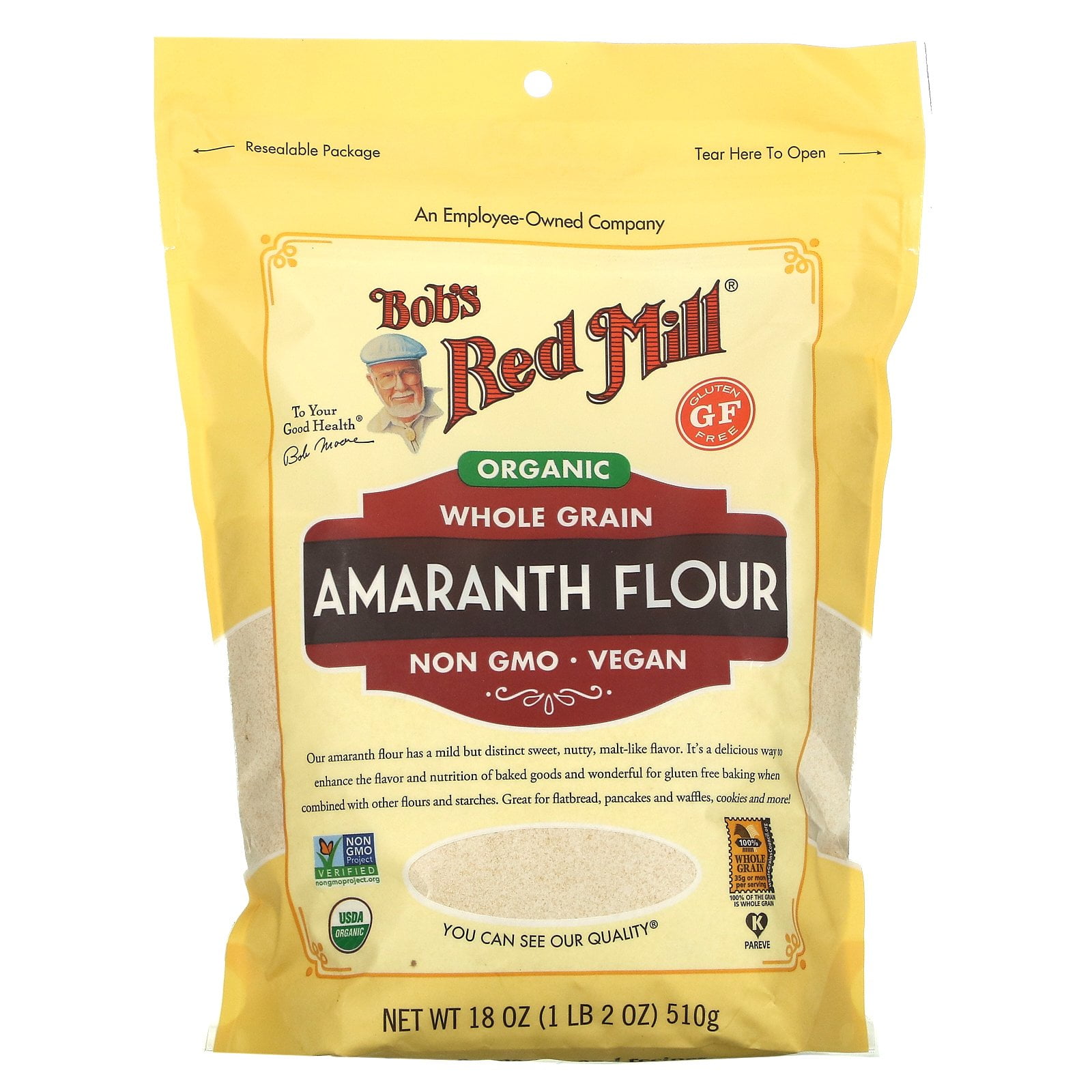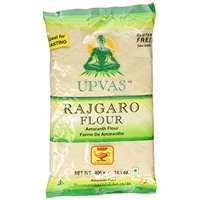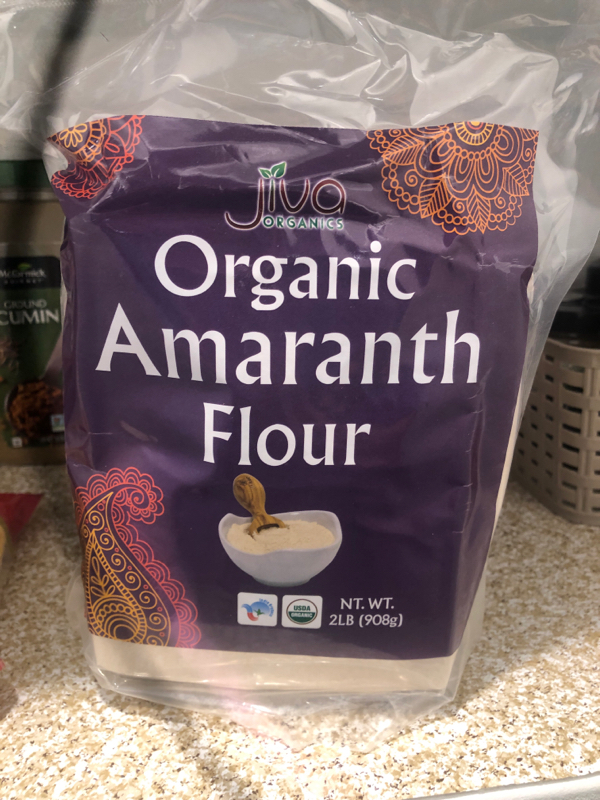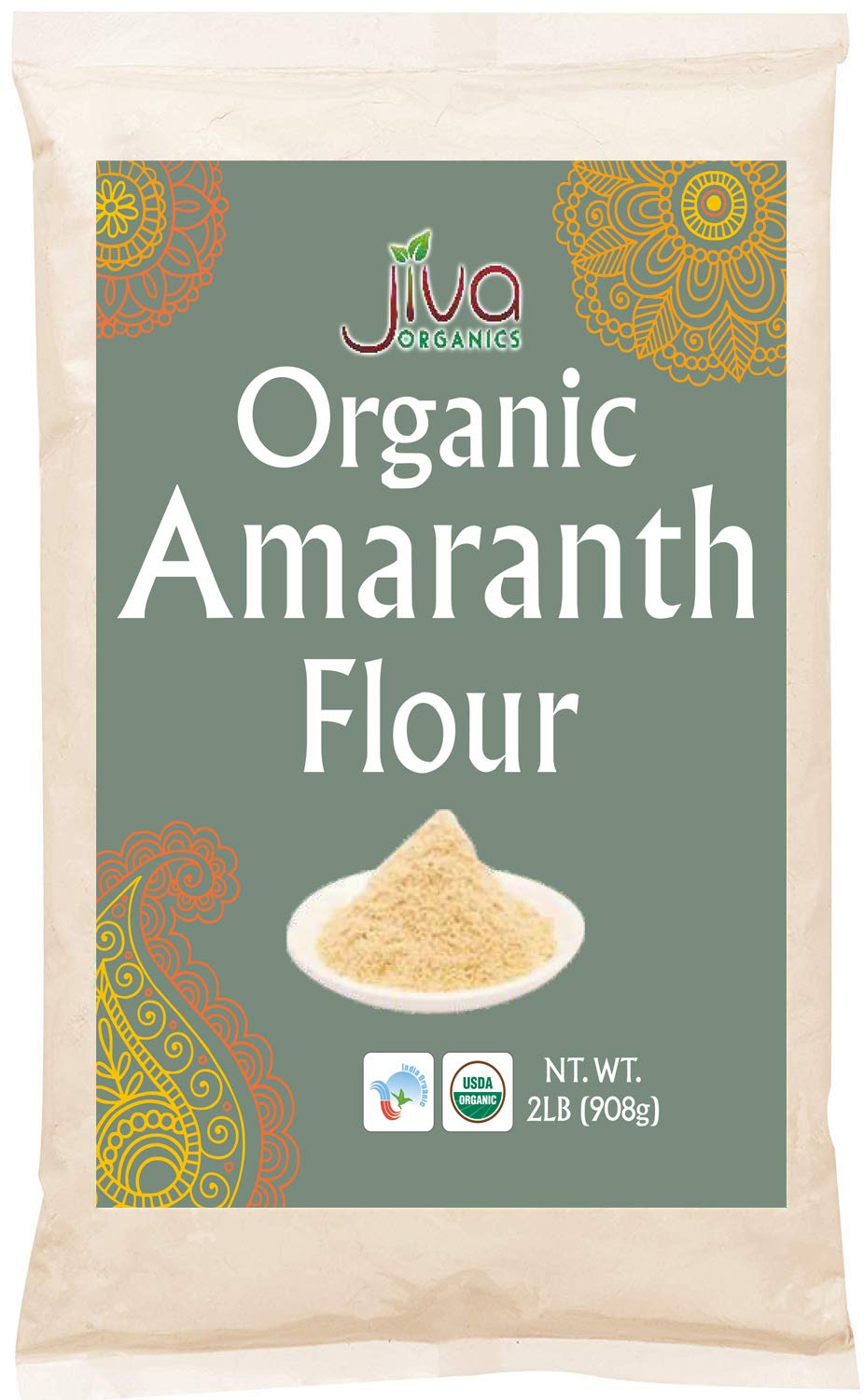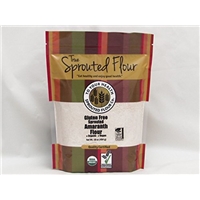BREADS
DESSERTS
Amaranth Flour
Amaranth flour is a gluten-free and highly nutritious alternative to traditional wheat flour. Derived from the seeds of the amaranth plant, it has been a significant food source for thousands of years in various cultures, particularly in ancient Aztec and Incan societies. With a nutty and slightly sweet flavor, this versatile flour is popular among health-conscious individuals and those with gluten sensitivities or allergies.
Rich in essential nutrients, amaranth flour boasts an impressive nutritional profile, including high-quality protein, fiber, iron, and magnesium. It is ideal for preparing a wide variety of delicious dishes, such as pancakes, quick breads, and homemade pasta. Due to its dense and heavy nature, it is often combined with other gluten-free flours to achieve the desired texture in baked goods.
77%
CARBS
8%
FAT
15%
PROTEIN
27 Amaranth Flour Products
Bob's Red Mill Organic Whole Grain Amaranth Flour Stone Ground
| USDA Organic | Perfect for Baked & Non-Baked Goods, Yogurt and Savory Dishes
1 Lb. Organic, Sprouted Amaranth
Amaranth flour
Bob's Red Mill Organic Amaranth Flour, Whole Grain
Amaranth Flour (Rajgaro Flour) - 14.1Oz
Organic Amaranth Flour
Jiva Organics Organic Amaranth Flour 2 Pound Bulk Bag - Rajgira Atta, 100% Natural & Non-GMO
5Lb. Organic, Sprouted Amaranth Flour
Pure Living Organic Sprouted Amaranth Flour
Amaranth Flour Is Frequently Used With
Amaranth Flour FAQ
Amaranth flour, with its subtle sweetness and nutty flavor, can be a tricky ingredient to work with especially if you're new to gluten-free baking. Many people struggle with getting the right consistency in their baked goods when using amaranth flour as it tends to make the end product heavier and denser than traditional wheat flour. Hence, the key is to blend amaranth flour with other gluten-free flours (like rice or almond flour) to balance out the texture - generally a 3:1 ratio works well. Also, amaranth flour absorbs liquids differently than wheat flour, so adjusting the amount of liquids in your recipe might be necessary. Be careful not to overmix the dough or batter to avoid ending up with a gummy texture, as amaranth flour has higher protein content compared to other flours.
In terms of flavor, while the nutty flavor of the amaranth flour enhances the overall taste of the dish, it can sometimes be overpowering. Therefore, using it in recipes where robust, earthy flavors are appreciated, like in rustic breads or pizza crusts, can be beneficial. Moreover, amaranth flour can be used to thicken soups, stews, and sauces, thanks to its natural gelatinous quality when cooked.
To enhance the taste and aroma, roasting the amarth flour grains before grinding them into flour adds a toasted, hearty flavor to your recipes.
Can I replace wheat flour with amaranth flour directly in recipes?
What does amaranth flour taste like?
Is amaranth flour bitter?
Does amaranth flour need to be cooked?
Why do recipes call for mix of amaranth flour and other flours?
Can I toast amaranth flour?
Can I use amaranth flour to thicken soup or stew?
Is amaranth flour good for bread?
Can I use amaranth flour for baking cakes and cookies?
Does amaranth flour have protein?
Expiration & Storage Tips
When does amaranth flour expire?
When unopened and stored in a cool, dry place, amaranth flour can last up to 12 months. After it's been opened, it can last for about 7 months if stored properly. If you freeze the flour, it can extend its shelf life for up to 2 years. Remember that all these timeframes are if properly stored and could vary.
How do you tell if amaranth flour is bad?
Amaranth flour going bad will have a sour or stale smell. The texture might also seem off, often feeling clumpy or damp. If you notice any change in color or see any kind of mold, then it's definitely time to throw it out.
Tips for storing amaranth flour to extend shelf life
• Store amaranth flour in an airtight container to avoid moisture.
• Keep the container in a dark, cool, and dry place. The pantry is a good choice, but a cabinet away from heat is also fine.
• If you do not use the flour often, consider splitting it into smaller portions and freeze the parts you will not use within a few months. This way, the flour will stay fresh for longer.
• Remember to label the container with the date when you bought the flour. This will help you keep track of its expected expiration date.
• If you opened the package, make sure to seal it tightly before putting it back into storage.
EXPIRES WITHIN
10 - 14
MONTHS
Substitutes
Health Info
Macros
86g
CARBS
8g
FAT
17g
PROTEIN
Allowed on these diets
LOW FAT
HIGH CALCIUM
VEGETARIAN
PALEO
MEDITERRANEAN
VEGAN
LACTOSE FREE
GLUTEN FREE



